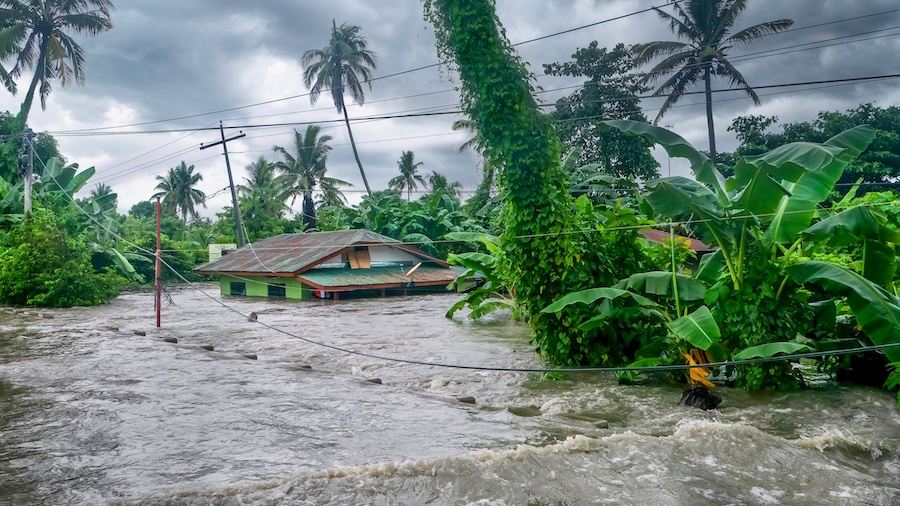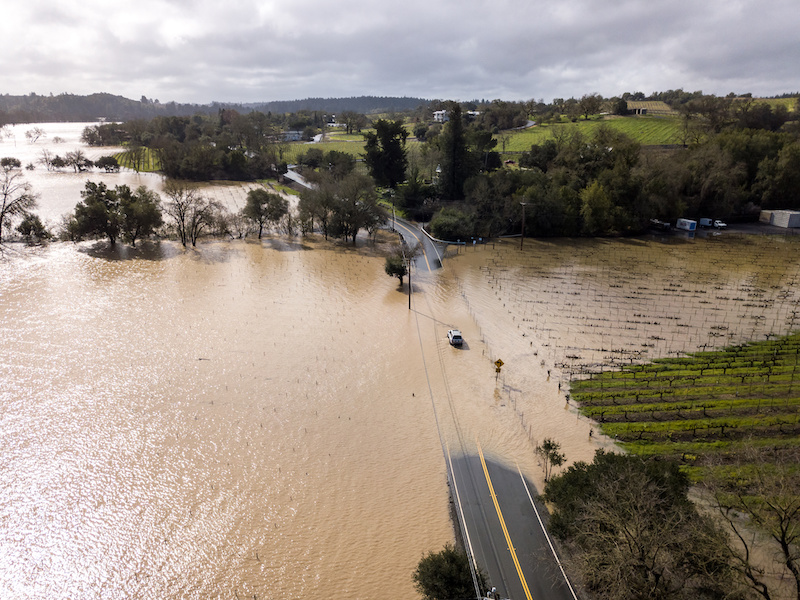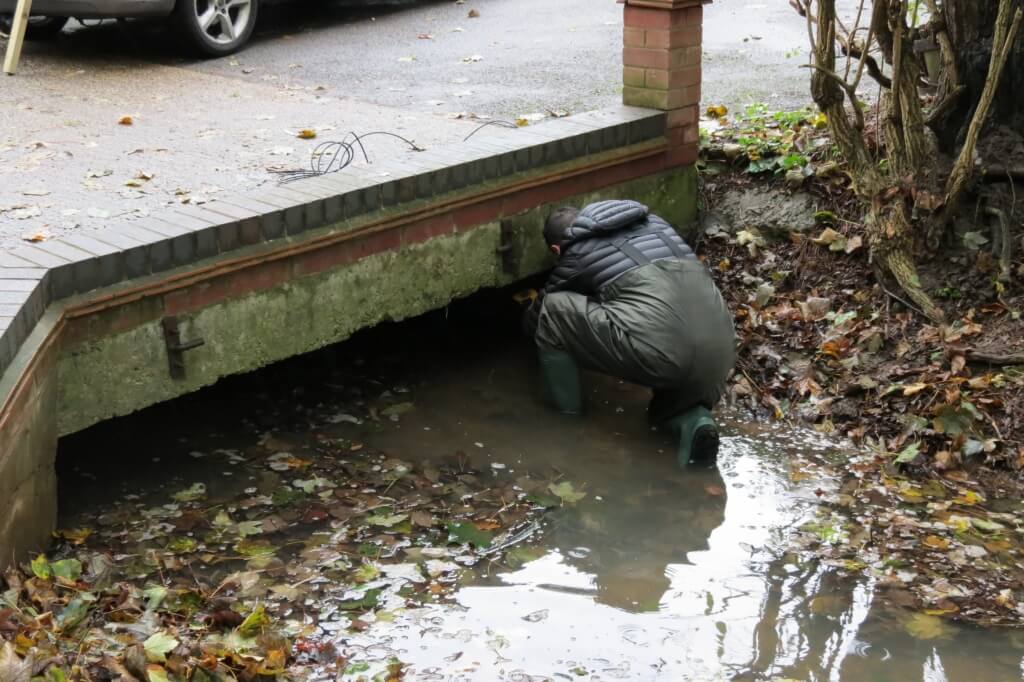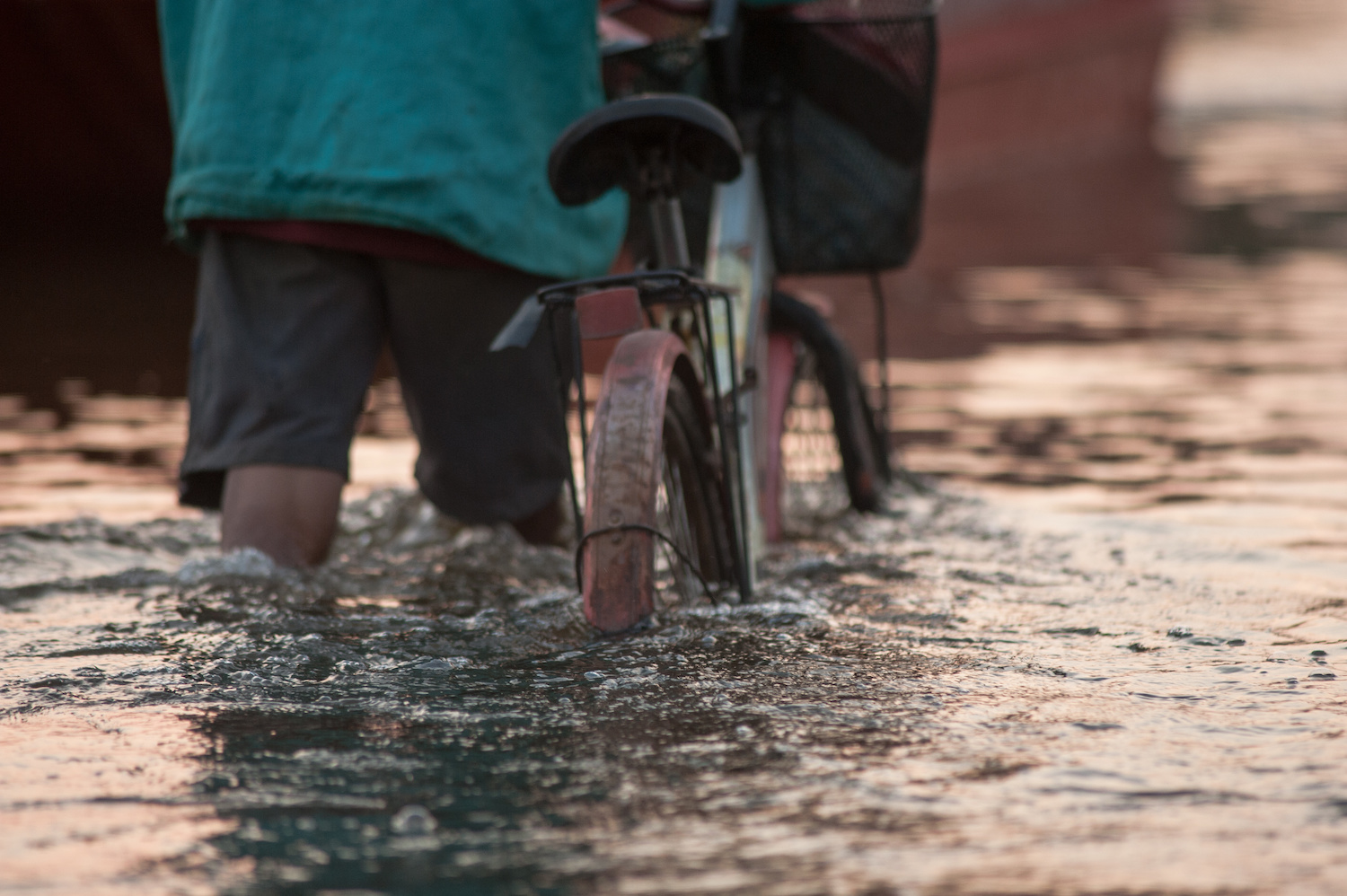There are several different types of flood, each with their own set of contributing factors. While these different kinds can occur separately, they often occur together – for example, inland floods can be caused by river floods, and vice versa!
Here, we’re going to explore the 5 different types or causes of flooding, looking at the circumstances that make each of them more or less likely (and more or less severe).
Coastal floods
Areas that are populated around the sea often experience coastal flooding.
These are caused by tidal surges, which are experienced as higher-than-average tides. A combination of the following factors can lead to flooding as a result of this:
- Extreme rainfall
- Winds coming from the sea onto land
- Barometric pressure
When high tide, low pressure, extreme rainfall, and on-shore winds occur together, the chances of coastal flooding are very likely. Sea defences are often no match for the waves that can be generated by strong winds.
Storm surge

While similar to coastal flooding, storm surges are often more extreme. These are usually caused by cyclonic storms that push water towards the shore, combining again with intense low pressure to generate large waves.
Tropical storms like hurricanes are a typical culprit here. Historically, Hurricane Katrina is a notable example of a storm surge with devastating consequences. Tide levels were estimated to be around 25 to 28 feet above normal, causing a dramatic storm surge in which at least 1500 people lost their lives.
You might be wondering how a storm surge is different from a tsunami – both cause flooding and pose risks to human life and property. The key difference is in their cause.
Tsunamis (enormous sea waves of 10 metres or more) are typically produced by seismic underwater events like volcanic eruptions, earthquakes, and mudslides. While they start out small, they generate rapidly in a period of 15 to 60 minutes.
Storm surges, on the other hand, are caused by extreme weather and generate more gradually.
Inland floods
Inland flooding – also known as urban flooding – occurs irrespective of the tides. Caused by rainfall, inland flooding is made much worse by:
- Hot summers that lead to droughts and compacted soil. When soil is densely packed together, it’s unable to do its usual job of soaking away water.
- Already very wet or frozen ground which is too saturated to soak up rainfall.
- Improper drainage systems or blocked channels, either caused by rubbish or tree debris and fallen leaves.
When inland floods wash into rivers and waterways, they can often take with them urban chemicals and degrade water quality.
River floods

Excessive rain, snowmelt, and ice blockages can all result in a watercourse overflowing.
While river floods are an incredibly natural process (helping to shape soil and spread nutrients), they can often be made worse by human activities. These can either occur directly – say, as a result of littering causing blockages – or indirectly. Indirect causes can include:
- The removal of wetlands which naturally sponge up large amounts of water
- Cutting down trees and shrubs which help rain seep into the ground and even reduce the flow of flood water
Flash floods
Flash floods do what they say on the tin! When rain falls fast enough that drainage systems and soil can’t cope, urban areas can rapidly fill with water.
Sometimes, though, flash floods aren’t caused by rain alone, but by:
- Dams or levees failing and releasing water
- Ice or debris blockages in watercourses breaking
Like with any other kind of flood, flash floods are worsened by compacted soil. In the case of flash floods, these are renowned for occuring in areas where wildfires have scorched the earth and vegetation that would otherwise soak up rainfall.
What causes flooding?
Whether it’s a coastal flood, inland flood, flash flood, storm surge, or river flood, the causes of flooding are a result of natural phenomena, human activity, or both.
As we’ve seen, such natural phenomena include barometric pressure, tidal changes, and weather events like precipitation and on-shore wind. While each of these phenomena can cause severe flooding, they’re certainly made worse by human activity such as:
- Deforestation and removal of wetlands
- Urbanisation without considering flooding planes and necessary natural drainage
- Improper or improperly managed drainage systems
- Climate change that leads to rising sea levels and more extreme weather events.
A combination of natural and human activity can quite literally be the ‘perfect storm’ that ultimately causes the most devastating of floods.
With extreme weather events increasing in frequency, and sea levels and flooding on the rise, it’s clearer than ever that there’s no time to waste when it comes to climate change. It’s important that we act in harmony with (and not in opposition to) nature, harnessing its benefits in order to keep people and property safe.
Flood monitoring with Aquaread

If you need to monitor water levels, Aquaread’s early warning devices can help you spot flooding early.
Head to our flood monitoring page to find out how we helped a small village in Essex get more time to react, following severe floods in 2014.
Our water level loggers seamlessly record changes in water pressure, and the LeveLine-BARO Logger records atmospheric pressure for a clear picture of flood potential over time.

